The spring season continues. We shall now embark on a
Fedora journey. If you followed my tirades over the past few
years, you will probably have noticed that I did manage to find some semblance of reasonable
productivity with Fedora, albeit after heavy modifications and tweaking. You can of course sample of
those experiences by reading my reviews –
Fedora 29,
Fedora 30 and finally the yesteryear
Fedora 31 article.
There’s much more, but I’m sure, if you want, you’ll find the material. Anyway, on my eight-boot
test laptop, I’ve had both versions 30 and 31 installed, and typically, I’d go for an in-vivo upgrade.
But I wanted to start from scratch, and get a sense of how the system behaves
au naturel, without any trace of my years-long polish and trim. So
here we go.
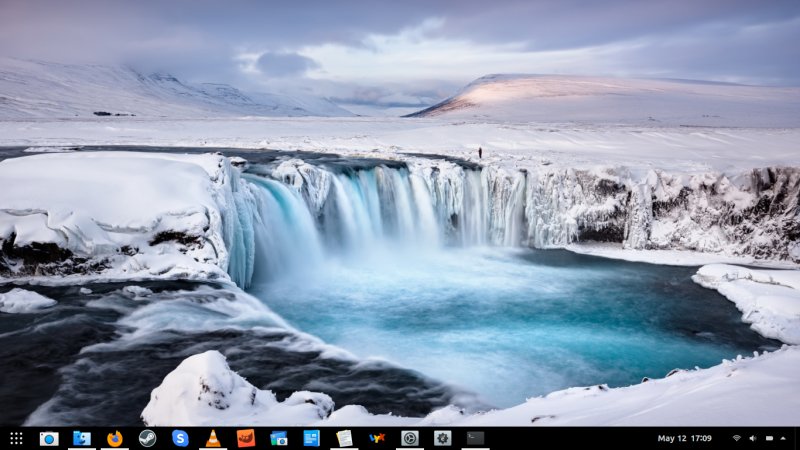
Live session
Let’s start with the boot sequence – compare it to my last-month
Xubuntu,
Kubuntu,
Ubuntu MATE reviews. Vendor logo, text message (some dracut
nonsense), the same text message in higher-res – the system is probing for different video modes and
whatnot, vendor logo – just a brief flicker, text boot with systemd messages and whatnot, desktop,
scene, breathe, applause.
Bad fonts, the Wireless icon hidden in the user menu, so you need to waste an extra click getting
something that is visible and obvious in every other operating systems. No ability to create new files
in the file manager via right-click, no window min/max buttons, 2020 is calling, it wants its GUI back.
Honestly, if I didn’t care about you folks, the review would have ended just now.
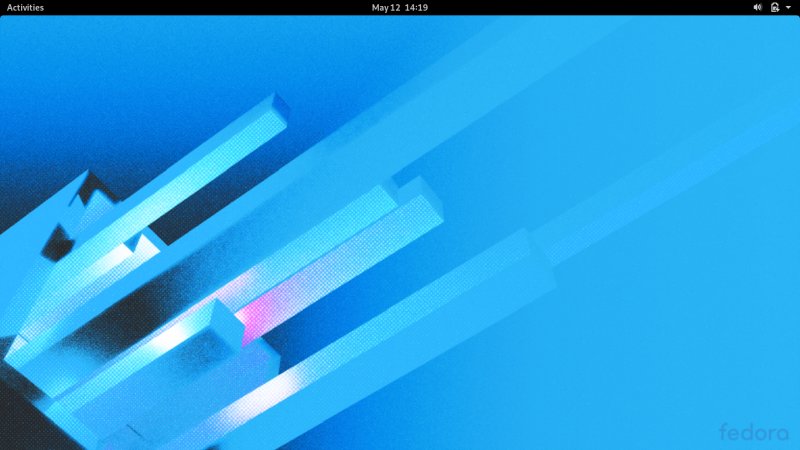
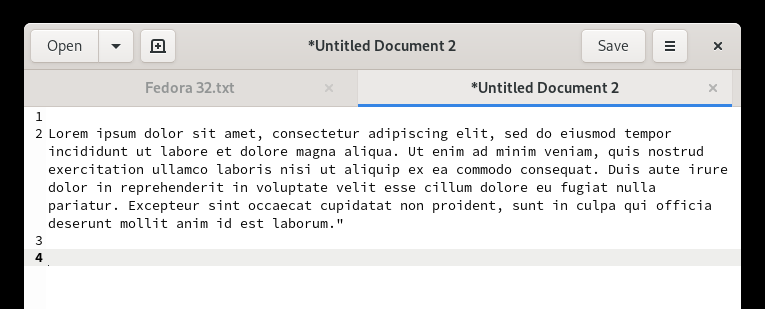
And it seems Fedora now also dishes out alpha borders in screenshots. Don’t
want.
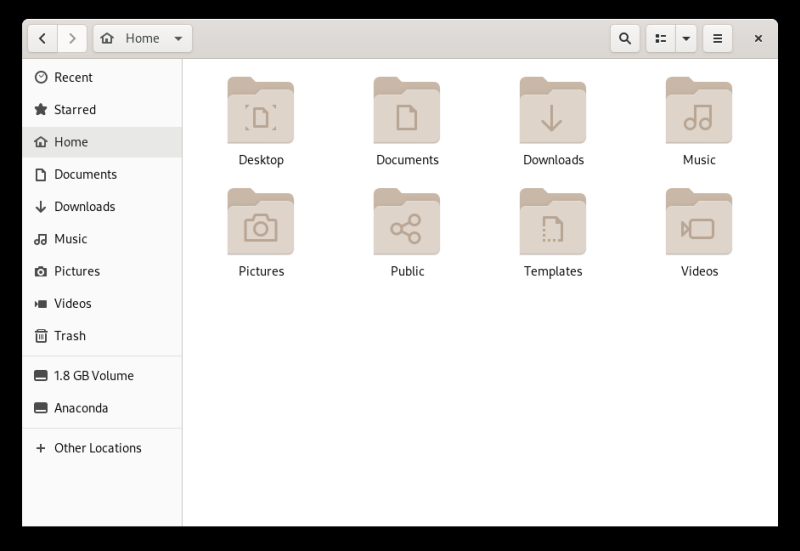
Files: notice the top border is not like the rest – part of the sadfest that is
Linux. Such splendid vivacious colors. If I wanted to depress myself, I could just watch the news.
Networking
Not good. Wireless, fine. Bluetooth, quite decent – the laptop and the phone auto-paired, as the
phone had the MAC address saved, and it initiated the connection. Samba sharing – not at all! First, I
thought this was because I used hostname rather than IP address. But then, that didn’t work
either. I was trying to connect to a Windows 10 host, so there should be no issues with
Samba protocol versions or anything. Even so, I tried to
change both the mix/max client and server version in the /etc/samba/smb.conf file, but nothing helped.
Similarly, my Samba printer wasn’t detected.

Here, smaller and equal borders. How consistent.
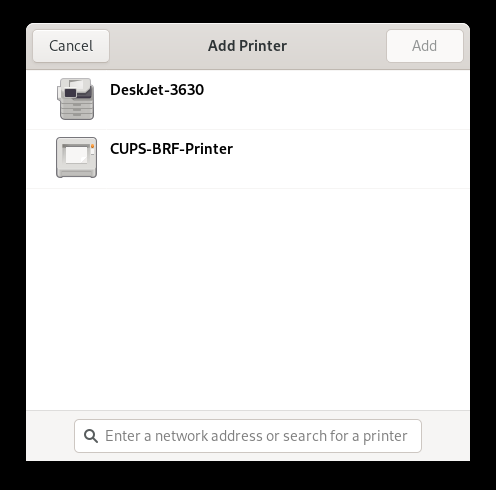
The font contrast is just horrible on the eyes.
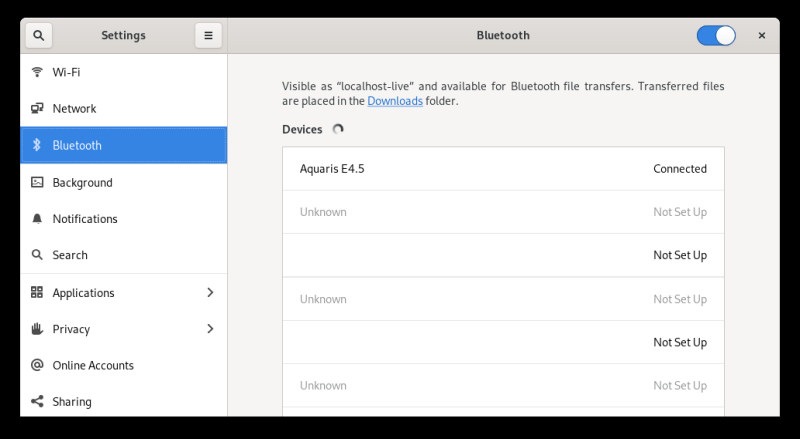
Multimedia playback
OK. A checkbox exercise really. Videos, hard-coded dark theme. MP3, HD, works fine.

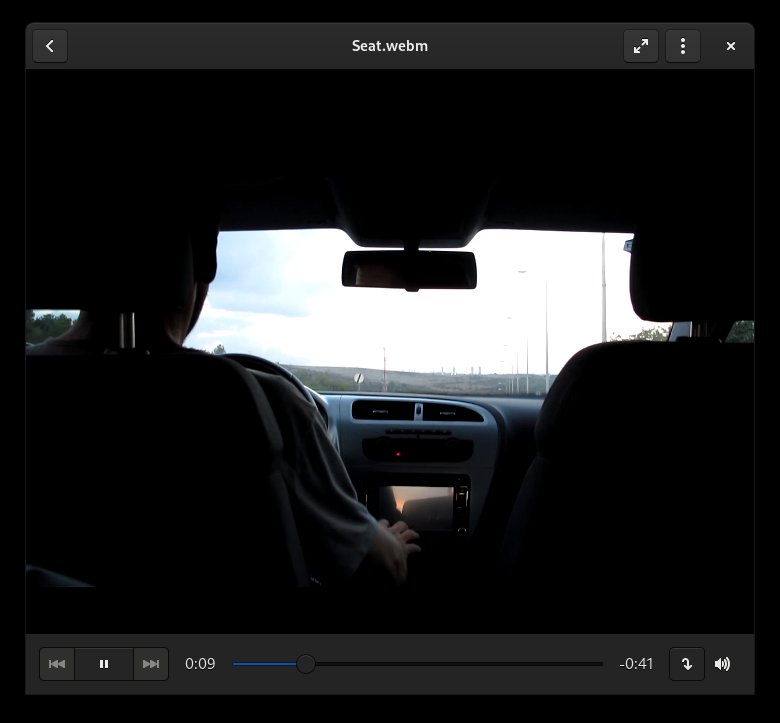
Smartphone support
I only tried Android. It took almost two minutes for the phone to mount and show up in Files.
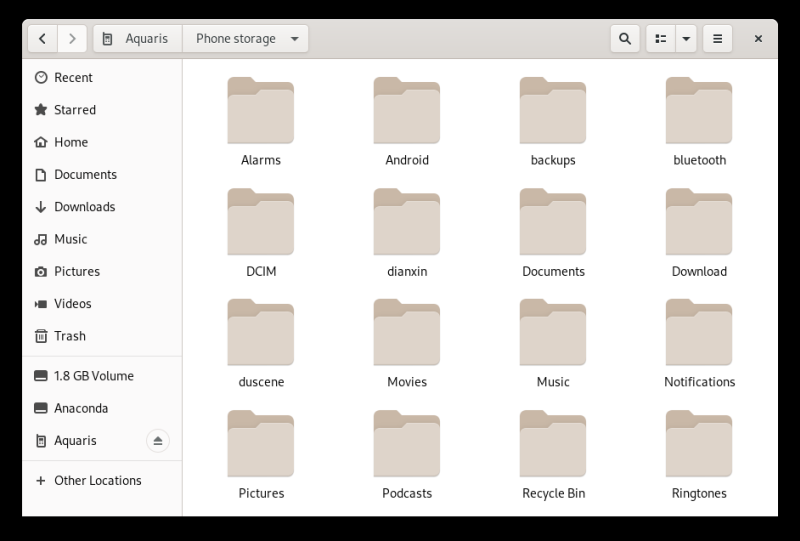
Ergonomics
I already mentioned a whole bunch of serious usability problems. This is Gnome, and nothing new. But
then, some of the issues simply never cease to amaze me. Behold, Firefox without titlebar – where the
min/max buttons ought to be, or at least the right-click option to invoke these two functions. Hence,
in Fedora 32, and we’ve seen this in previous versions, you simply cannot minimize the browser by
normal means. And if you say keyboard shortcut, then 99.99% of computer users salute your special l33t
skills.
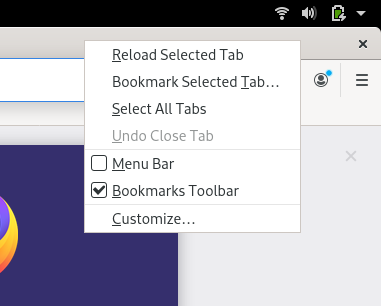
As the Italians would say: dove min?
Performance so far
Gnome 3.36 is sprightlier, but you still get occasional freezes, and the mouse cursor lags – like
when you search for an application through the menu. Overall, the mouse motion is much more fluid, and
the desktop is more responsive, but the intermittent freeze problems are non-ignorable.
Other stuff
Since I couldn’t Samba, I tried copying files to one of the internal volumes. You can’t do it in
Files.

Installation – super frustrating
Think of any legal document you’ve ever signed, any contract. What does it look like? Text, text,
and then, at the
bottom, you sign. That last piece is where you okay what you’ve just
read. In Fedora, the OK button, whatever the label is, is in the top-left corner, contrary to all any
logic of information flow. Since Fedora 18, we’ve had this thing.
If that wasn’t bad enough, the partitioning step is convoluted and slow. I decided to go with
Blivet. Without me touching anything, the system told me that the installer wasn’t responding, and if I
wanted to force quit or wait.
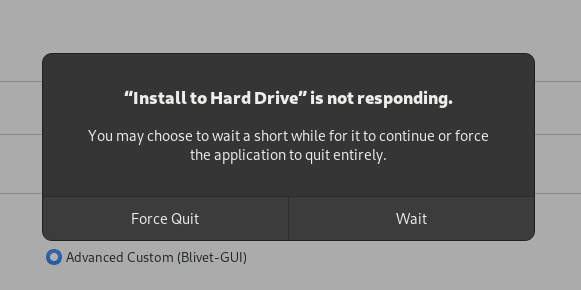
Once you’re there, tons of empty space. The partition information is shown, sans labels, in the left
20% of the “partition table” – with so much unused real estate. When you want to select a partition,
the GUI lags for about two or three seconds before it selects the actual entry. Once you make a change
– like format or mountpoint, it waits another 30-40 seconds before it relinquishes control. Hitting
Done hangs again – more prompts that the installer was frozen.
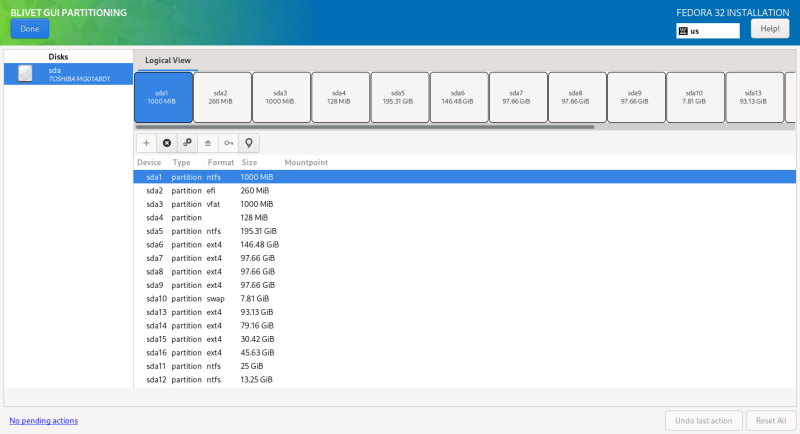
Empty spaces, what are we Tuxing for?
Then, there was a configuration error with my partitions. Looking at the details – I’ve not
specified the /boot/efi mountpoint. Why can’t the distro figure it out on its own? Anyway, Blivet gives
you no indication whether you’ve selected the format option for a partition or not. The /boot/efi and
the root (/) entries look identical.
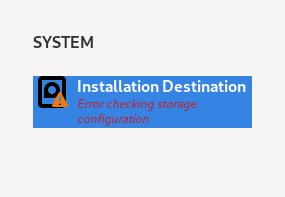
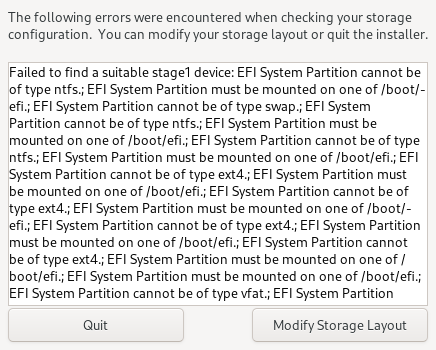
Such a beautiful, readable paragraph.
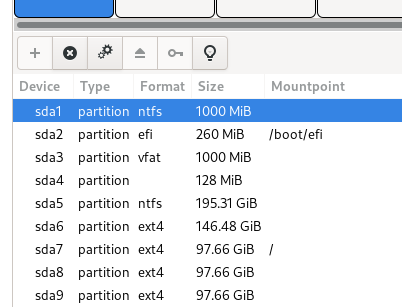
Difference between /boot/efi and /? Vast. Visible? Nope.
Hit Done, wait, more config errors. Turns out, I’ve mounted some of the internal partitions –
because I couldn’t use Samba, and now the installer was complaining that these partitions were in use.
Who cares? I’m not using them for Fedora. Worse yet, why not tell me all these problems at once, why
the piecemeal method? And why wait with the errors until I’ve gone back to the main screen? Add to that
the slow response from the installer, and you can imagine my level of blood pressure.
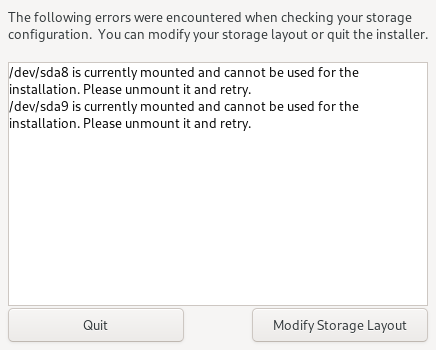
The installation then started. Just a progress bar with percentages, nothing fancy, no graphics.
There’s no reason for a fullscreen installation window for that, but that’s what you get.
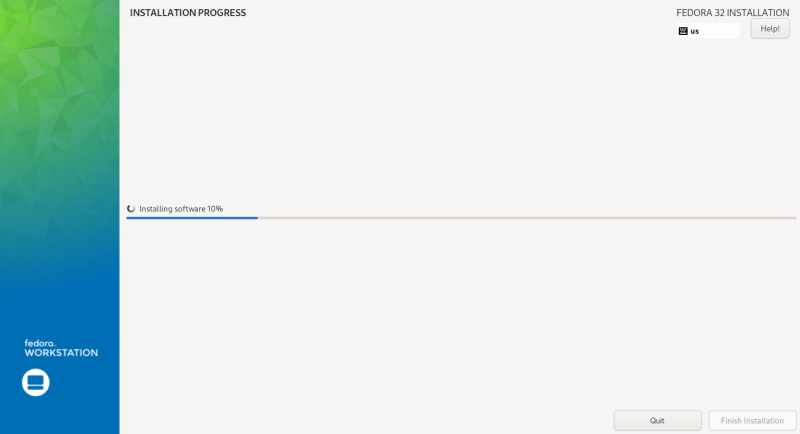
Abandoned pixels, I guess we know the score.
After the installation
GRUB menu, vendor splash, desktop but frozen, back to vendor splash, first-run user configuration
step that also includes online accounts if you want, optional location services (on a desktop, irony)
and automatic problem reporting, and then finally, the usable desktop – and when I say usable, I mean
somewhat, because we need to customize it heavily. But then, the Wireless settings were preserved, and
the language and keyboard are set correctly, and there’s no regionalization. One other important thing
– Samba actually works in the installed system … Go figure.
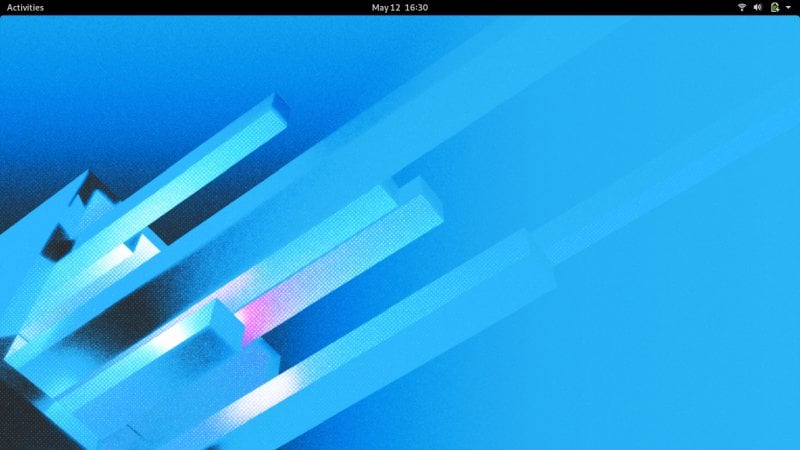
Fedora 32 started with the swap configured – even though I’ve not specified it – this used to be a
problem in the past. But then, if it can auto-detect swap and configure it, why not /boot/efi? Exactly.
The system downloaded almost 1GB worth of updates right away – making the system not very usable in the
first few minutes. The system monitor now also shows cached data – a field that has zero meaning and
relevance to anyone non-techie.
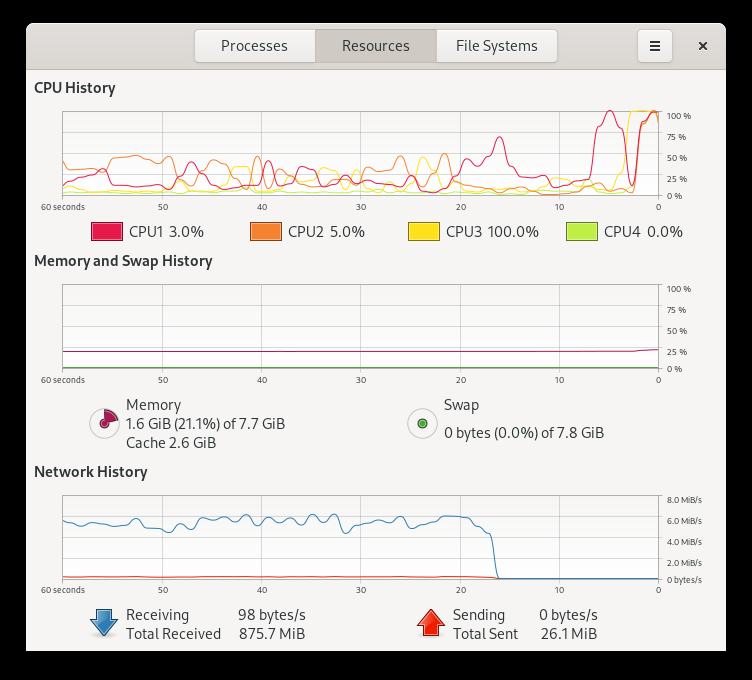
Making Fedora 32 usable
This was my first order of the day. We shall have a complete article on this, too. In essence, this
is what I did. Gnome Tweaks, Gnome extensions,
Dash to Panel, add window buttons, add Ubuntu fonts, add new
icons, change grayscale anti-aliasing to subpixel (no idea why this isn’t the default in 2020), and
breathe. There were some snags – you need to enable extensions for extensions to work (inception), but
you need Gnome Tweaks first, so if you don’t install it, even if you do enable some extensions through
the
official site, they won’t work. If you can’t follow the
flow of the last paragraph, it ain’t my fault.
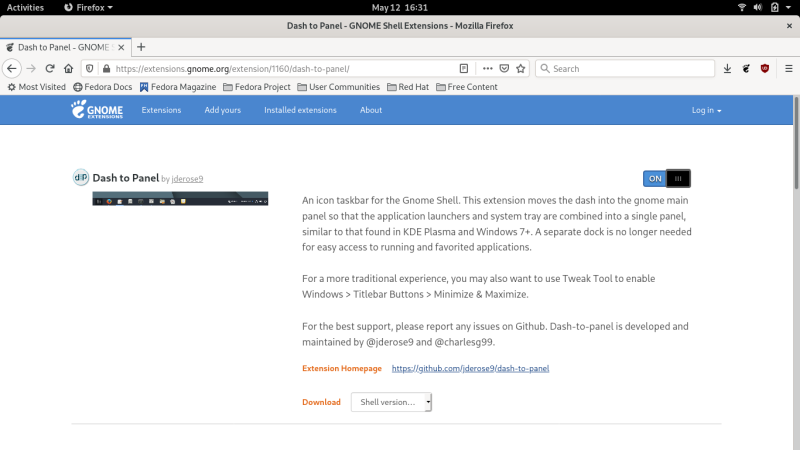
Extension on, but as you can see, the Activities and top panel have not morphed
into a dock.
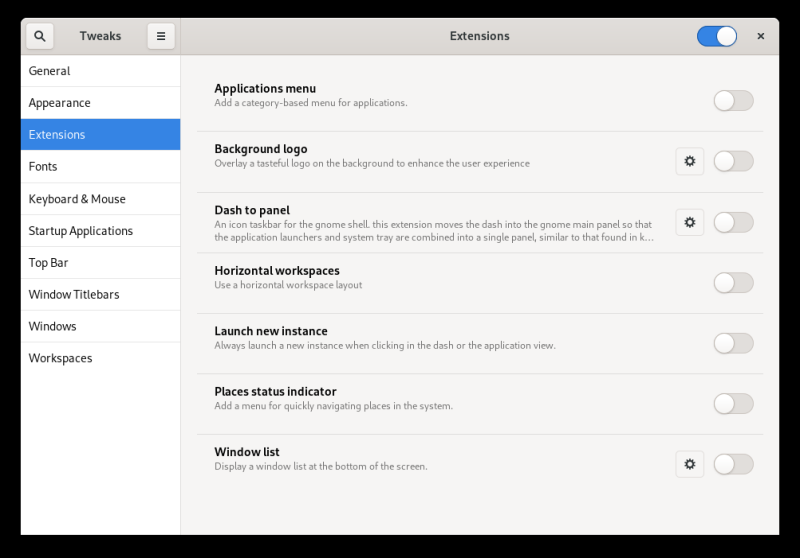
You must enable extensions (a global toggle) through Gnome Tweaks first; more
useless mouse clicks.
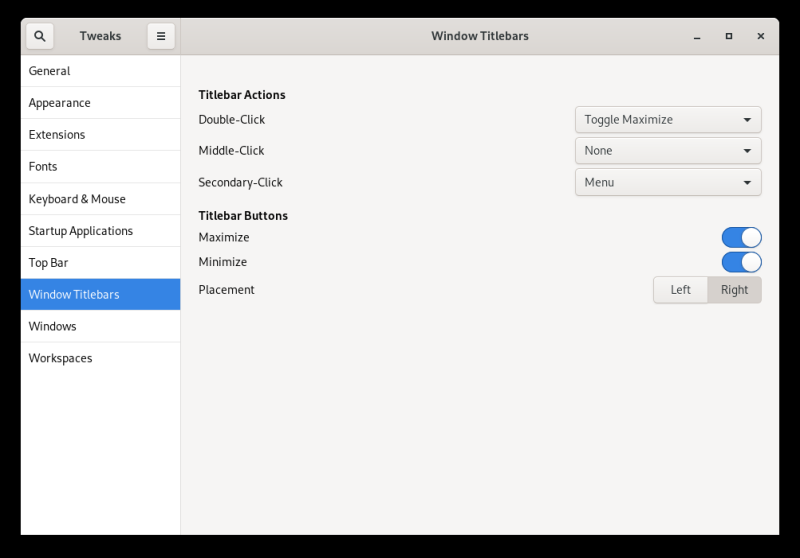
Getting my sanity and efficiency back.
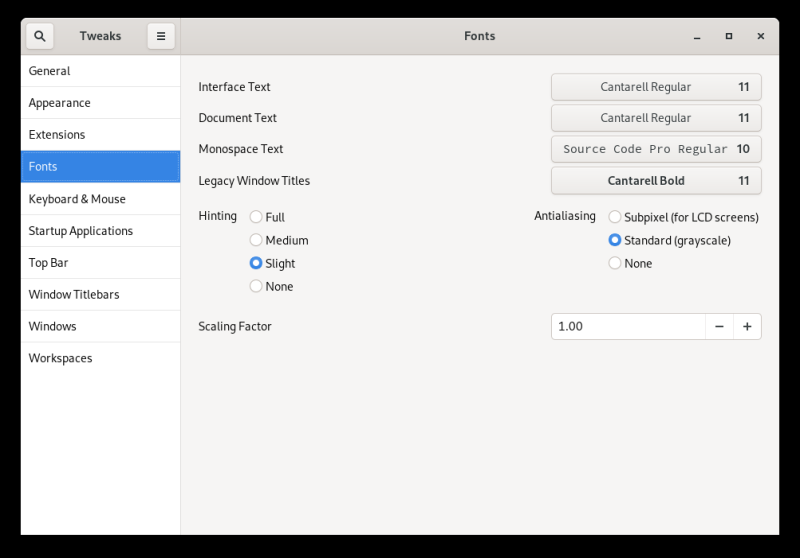
Default fonts – pale, thin, nopety nope.
Much like what I’ve shown you in my recent
SparkyLinux and Xubuntu 20.04 reviews, it doesn’t take much
to transform a bland, boring and inefficient baseline to something that is appealing and fun and
productive. Alas, without the end-user in mind, the Linux desktop is stuck in its own self-perpetuating
loop of making tools for developers by developers with zero consideration to aesthetics or
ergonomics.
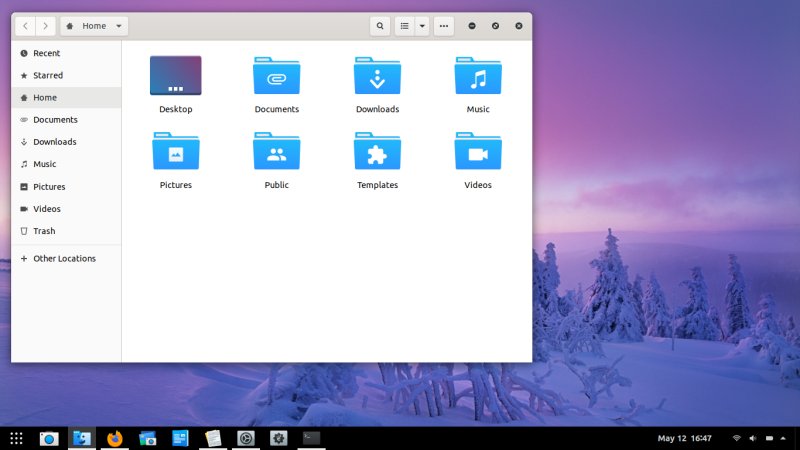
Notice the color and contrast of Files now as opposed to the early live session shot. Not only is is
this better looking by a parsec, it’s also more accessible and usable, as the fonts are cleaner,
sharper, darker.
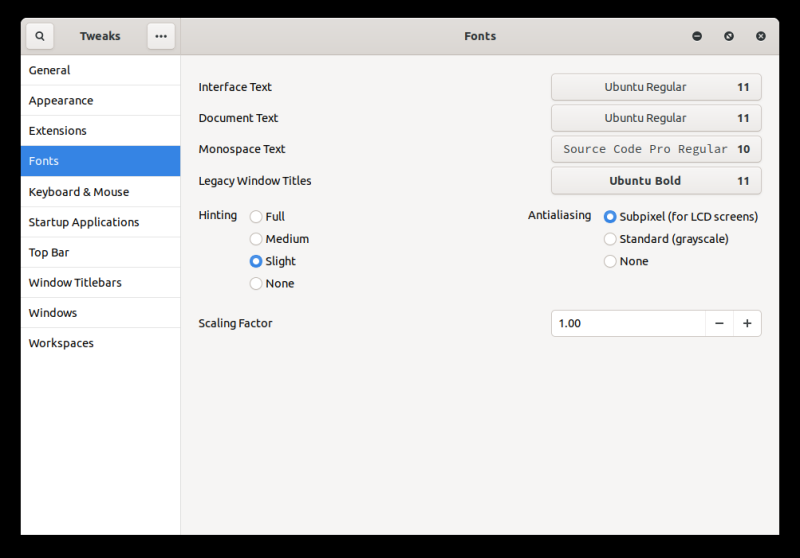
The wallpaper functionality has finally been fixed – you can add images from random locations. In
the past, this was hard-coded to jpgs from the Pictures folder. Now, you can select any which folder
you like. Good.
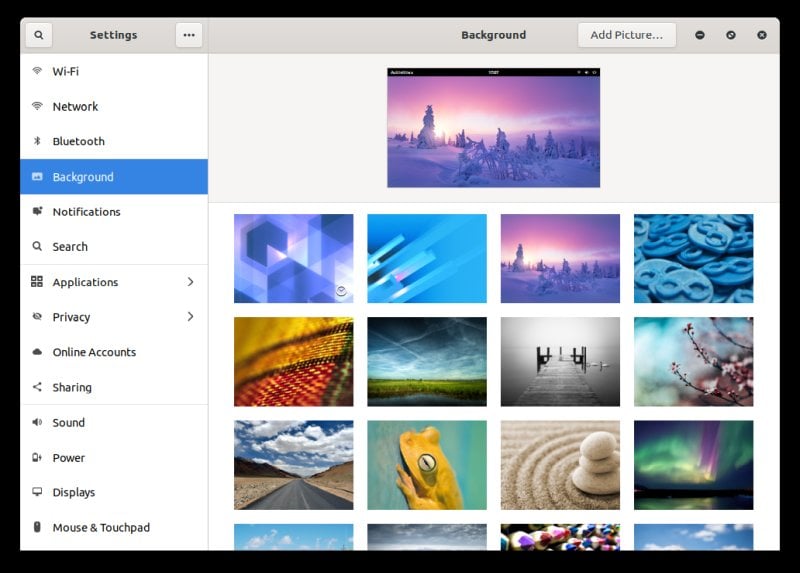
And a desktop that can be used:
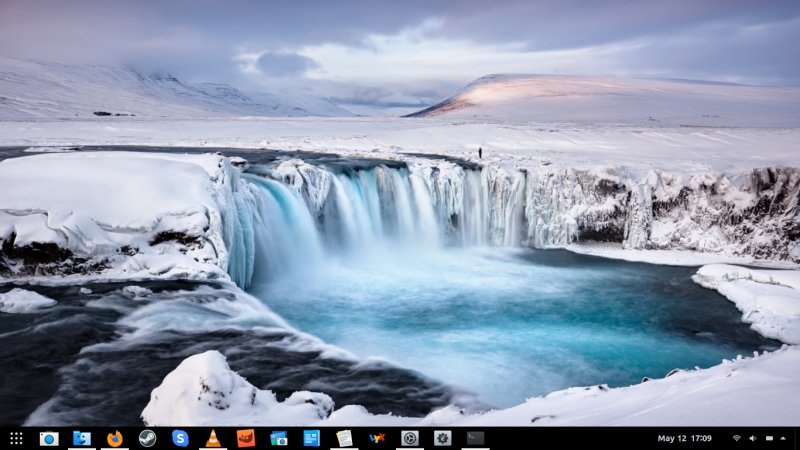
Package management & updates
Software is just not fun. I simply found no reasons to use it, whatsoever. It’s also buggy. If you
use it to update the system, you waste time. If you enable third-party repos on the command-line, e.g.:
RPM Fusion, it still prompts and asks you to enable those. Buggy, don’t want.
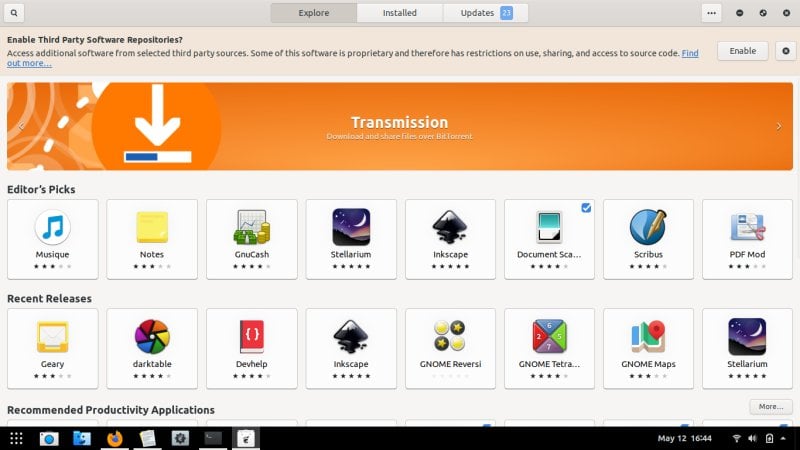
Third-party repos already in action.
Applications
Fedora’s ISO isn’t giant – 1.8 GB, and it doesn’t pack too much. Functional but not very exciting.
Firefox, LibreOffice, Rhythmbox (which isn’t default for music, so I wonder why it’s there), Cheese,
Boxes, some other apps and utilities, and that’s about it really.
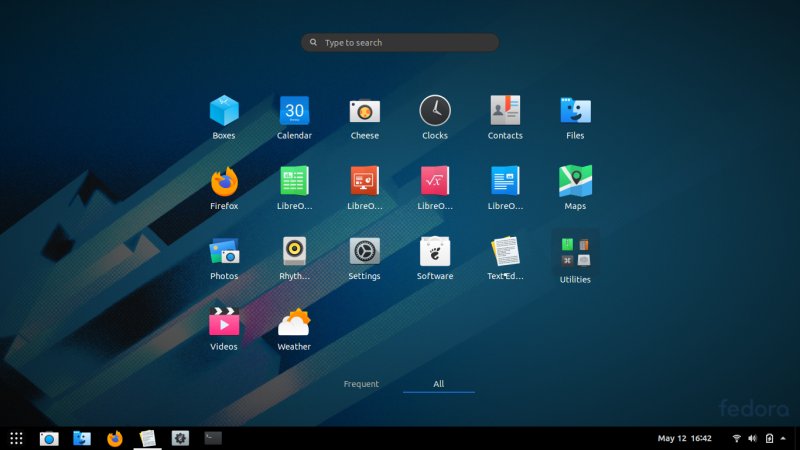
Extras
Of course, after my nice and lovely customization, things are looking much better:
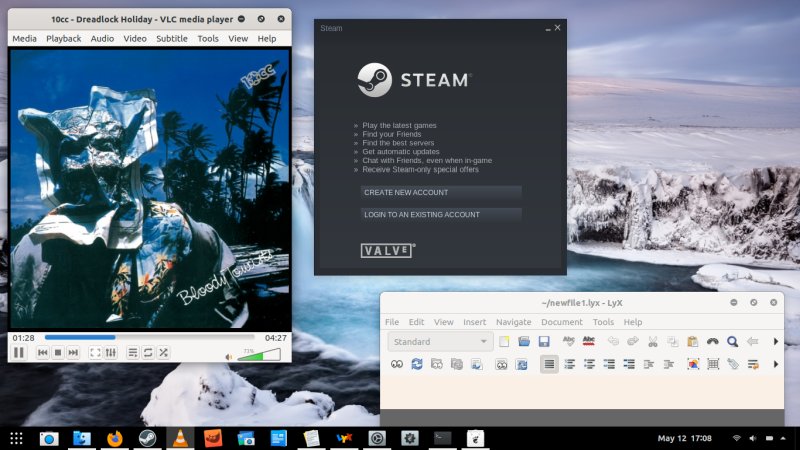
Stability, problems
Not good. This wasn’t a stable distro at all. I mentioned performance issues, and we’ll talk some
more about that soon. Now, at some point, I noticed windows wouldn’t really maximize, or rather they
would, but they would remain 80-90% transparent. Really odd. Some windows but not all of them.
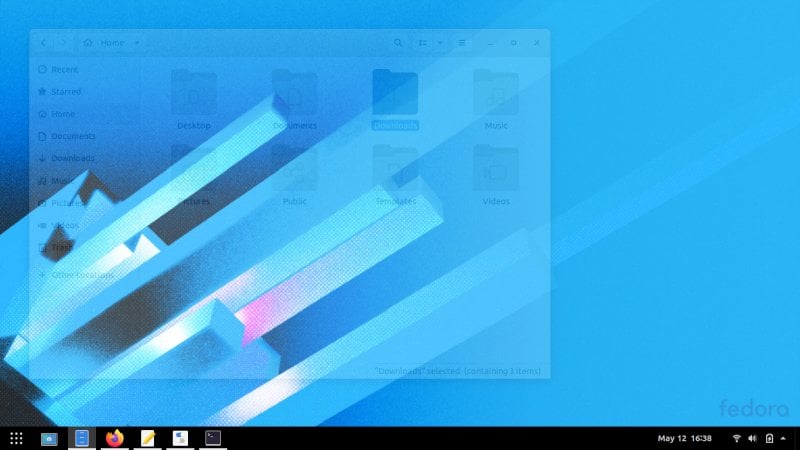
This is not a transient animation snapshot; the file manager is fully usable in
this state. I guess Wayland & Gnome Shell issues.
Firefox also refused to minimize – it would spring back up, and then it promptly crashed. Trying to
access the user menu would cause the Gnome Shell to crash. I had three or four of these in the span of
about half an hour. I then logged out, and changed from Wayland to X Org, and things improved
significantly. A cleaner, faster interface, fewer visual bugs and glitches, no more transparency
ghosts. The Gnome Shell crashes remain, though.
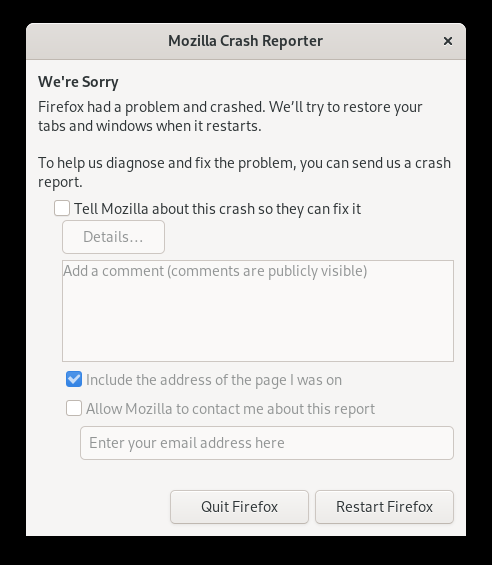
gnome-shell[7660]: segfault at 0 ip 00007f0cdd86aada sp 00007fff932162c0 error 4
in libst-1.0.so[7f0cdd844000+50000]
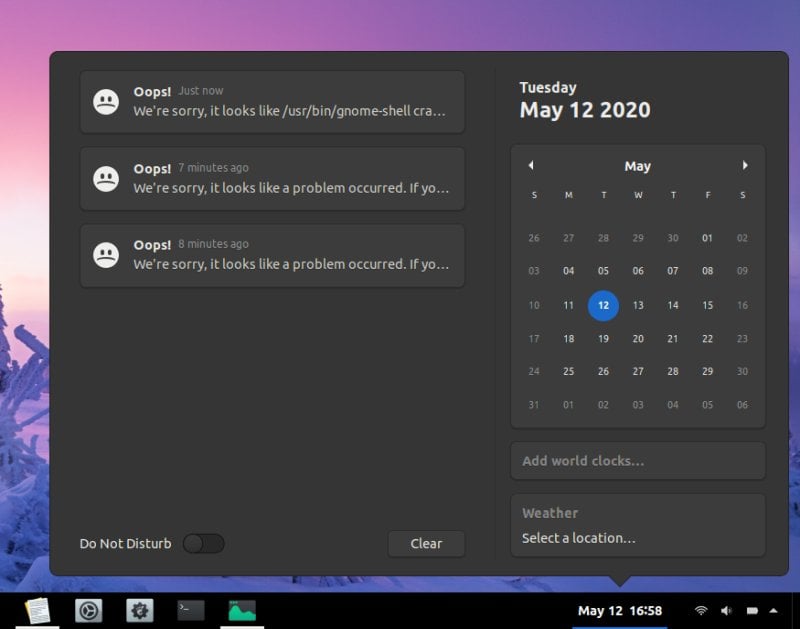

After waking from suspend, I would experience
kernel oopses – a recurring problem for CentOS and Fedora since forever,
and which hasn’t been resolved. It will probably be resolved in the classic Linux desktop fashion –
ignored until my laptop becomes irrelevant.
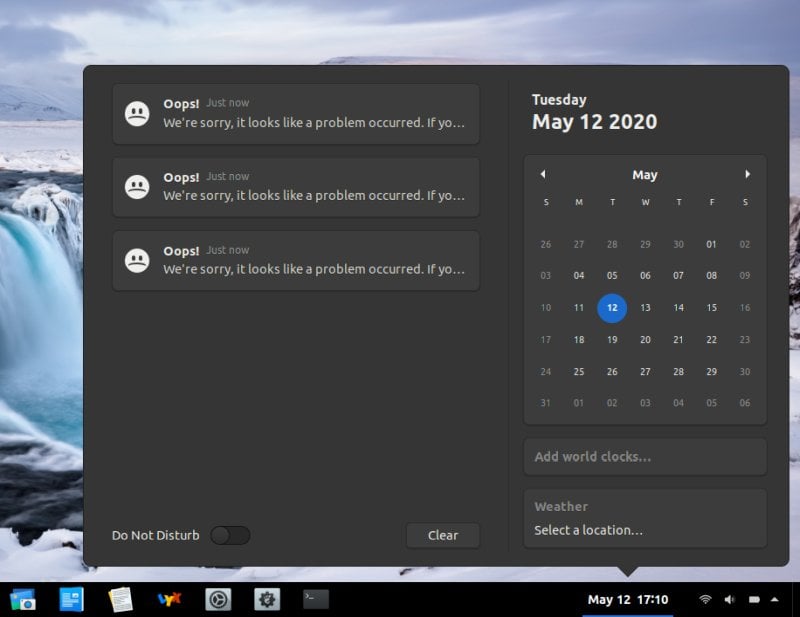
Oops, I did it again.
The switch from
Wayland to X Org resulted in a better experience overall –
including more responsiveness, reduced system resource utilization, and greater stability. It’s been a
while since Wayland was conceived, and it’s still not up to the task. Like most technologies designed
in the “agile” era, it’s a
rolling ball of good enough, and it probably won’t ever
be finished in any sort of coherent, product-complete way. I am totally dismayed that buggy code is
allowed into user-facing software. But then, this trend is plaguing the entire software industry, and
it’s getting worse and worse by the day.
Resource utilization, performance
On idle, you get 1.3 GB RAM used, 4-5% average CPU tick. More fluid and responsive than Fedoras of
the past, but if you start doing a bunch of things in parallel, the experience degrades quickly.
Typical Xfce and Plasma desktops are much more efficient, and perceptibly faster. This is great
improvement, but still not enough.
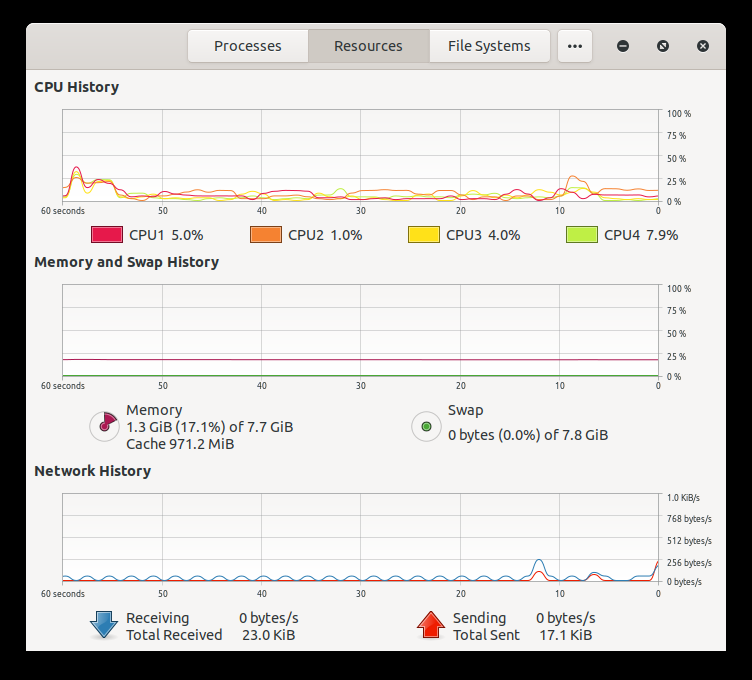
Battery life
At full brightness, light usage, the battery (at its 60% out of total original capacity) gives only
90 minutes. So this would translate to 150 minutes for a fresh cell, add about half an hour for
brightness, and you get three hours and a bit. Definitely less than what most Xfce and Plasma desktops
offer. Worst, this is not as good as what Fedora 31 did – but then I guess it has to do with kernel
changes. Plus, the power management isn’t aggressive. You don’t get auto-dim or alike, for
instance.
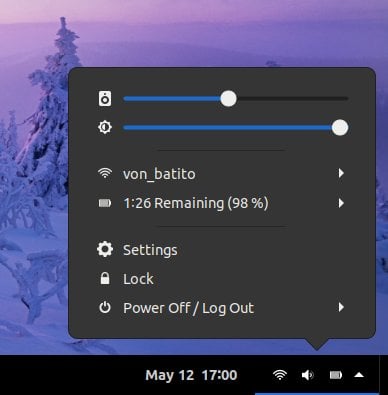
Conclusion
Sometimes, often, more frequently than ever before, I wonder why I bother. I refuse to be
inefficient. Time is valuable. Why do I spend it doing un-fun stuff when I could be doing nice and
productive things? Maybe it’s time to stop Linuxing. ‘Twas a great ride and all that, but I kept
getting dragged back to 2005, and I simply don’t want that.
All in all, I’ve had moderate+ amounts of fun with Fedoras 29-31. Here, none at all. Fedora 32 is
less capable than its predecessor, almost on all levels. Basic functionality is simply … less. This
is not good. There are some nice things here, of course, like any distro, but they cannot offset the
tidal wave of regressions and problems. Fedora 32 wasn’t stable enough for me, I had to make
significant modifications to make it usable, and while the responsiveness is better than before, the
battery life suffers, and there are crashes in the heart of the system.
Now, you can’t really stay on Fedora 31 for long, because it’s quite short-lived. So there is no
choice here, per se. If you like Fedora, you will use it, and that’s it. But if you’re looking for a
desktop distro, I can’t recommend this in any way. If you want to Red Hat, you could try the rather
nifty
CentOS 8 instead. If you don’t care, there are more viable
options out there. On a super-sad note, Dedoimedo out.
